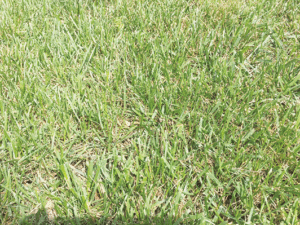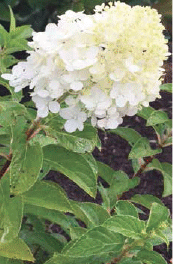September is the perfect time to think about updating a lawn. 
The middle to end of September brings in cooler weather creating the best time to control annual and perennial weeds, amend the soil pH, and apply fertilizer and perennial grass seed.
A soil test will determine if the soil pH is too low (too acidic) for the lawn to thrive but it is often perfect for many weeds to thrive.
The best way to raise the soil pH is to apply pelleted lime to the soil, and a soil test will tell just how much lime each lawn needs.
This can be done at any time, but fall will work very well.
The soil test will also show how much nitrogen and potassium the soil needs.
With the new Maryland Lawn Fertilizer Law, phosphorous can only be applied if the lawn will be totally redone with the lime and fertilizer mixed into the top 6 inches of soil.
By applying fertilizer for the lawn in September, it allows the roots to take up the nutrients and to develop a better and more diffuse root system that will create better grass leaves in the spring and summer.
A list of regional soil testing labs can be found on line or call your local county Extension office.
Many of the weeds in a lawn are annual weeds which will die after the first hard frost.
Crab grass is a common annual weed that grows outwards, shading a thin lawn.
By amending the soil with lime and fertilizer and applying a good turf type tall fescue in the fall, the perennial grass seed will have an opportunity to get established without the pressure of annual weeds, and shade out the spring growing annual weeds.
The turf type tall Fescue grass is still the best type to grow on the Eastern Shore if the lawn is in full sun.
If the lawn gets at least six to eight hours of bright filtered light, a fine fescue, also called a chewing fescue or hard fescue, will tolerate the lower light and still look wonderful.
The fine fescues are more delicate and will not stand up to a lot of foot traffic, but will give the light shady area a nice lawn.
Planting grass in the fall is called “over seeding” since the seed is planted into the existing grass lawn.
Before spreading the grass seed into an existing lawn, either de-thatch or aerate the lawn, or rake the lawn with a steel rake to create some bare ground for the seed to land in and grow.
For a turf type lawn about four pounds of grass seed should be spread more than 1,000 square feet of lawn.
Next, roll the lawn with a water filled roller or tamp down the seed using the back of a steel rake to firm the seeds into the soil.
Good seed to soil contact is very necessary for the seeds to germinate and grow well.
Newly planted seeds need to be watered every day and sometimes twice a day to keep the seeds moist. If the seed is allowed to dry out, it will die.
Water daily for at least two weeks to encourage the grass roots to grow down into the cool soil.
Wait until the new grass is at least 2 1/2 to 3 inches high before mowing for the first time.
The mower blades should be sharpened while the new grass grows so the sharp blade will cut the grass and not tear it out of the soil.
During the following summer mow the lawn to grow to the height of at least 3 to 4 inches high to give the leaf blade a chance to absorb as much sunlight as it can, and to shade out the annual weeds.
(Editor’s Note: Ginny Rosenkranz is a commercial horticulture specialist with the University of Maryland Extension.)




